Top 10 Most Popular Cheeses in Cyprus

Welcome to a flavorful journey through the heart of Cyprus! This sun-drenched Mediterranean island is renowned for its stunning beaches, rich history, and vibrant culture. But there’s another aspect of Cyprus that truly sets it apart – its cheese.
Cypriot cheeses are as diverse, unique, and captivating as the island itself. From the world-famous Halloumi to the lesser-known but equally delicious Anari, each cheese offers a unique taste of Cyprus’ culinary heritage.
In this post, we will explore the top 10 most popular cheeses in Cyprus. These cheeses, with their distinctive flavors and textures, have not only delighted locals for generations but also captured the hearts (and palates) of food enthusiasts worldwide.
Disclaimer: The cheeses mentioned, though popular in Cyprus, are not exclusive to the region. Cheese production is a global craft with diverse origins and influences. Despite their widespread consumption in Cyprus, it does not imply Cypriot origin for all these cheeses.
The 10 Most Popular Cypriot Cheeses (BEST)
| Cheese | Description |
|---|---|
| Halloumi | This is a Cypriot cheese made from a mixture of goat’s, sheep’s, and sometimes cow’s milk. It’s known for its firm, salty taste, and high melting temperature, making it perfect for grilling or pan-frying. |
| Anari | Anari is a fresh mild whey cheese produced in Cyprus. It’s often compared to ricotta, although it’s typically drier. |
| Feta | Feta is a brined curd white cheese made in Greece from sheep’s milk, or from a mixture of sheep and goat’s milk. It is a crumbly aged cheese, commonly produced in blocks, and has a slightly grainy texture. |
| Graviera | Graviera is a type of Greek cheese. It is hard and has a slightly sweet and nutty taste. The cheese is often used in a Greek dish called Saganaki. |
| Kasseri | Kasseri is a medium-hard pale yellow cheese made from unpasteurized sheep’s milk with no more than 20% goat’s milk mixed in. |
| Myzithra | Myzithra is a fresh cheese made with milk and whey from sheep and/or goats. The ratio of milk to whey usually determines the taste of the cheese. |
| Saganaki | Saganaki is not a cheese but a traditional Greek method of preparation that involves frying cheese. |
| Manouri DOP | Manouri is a Greek semi-soft, fresh white whey cheese made from goat or sheep milk as a by-product following the production of feta. |
| Kefalotyri | Kefalotyri is a hard, salty yellow cheese made from sheep milk and/or goat’s milk in Greece and Cyprus. |
| Kefalograviera | Kefalograviera is a hard table cheese usually produced from sheep’s milk, or a mixture of sheep’s and up to 20% goat’s milk. |
1. Halloumi

- Country of Origin: Cyprus
- Milk Type: Sheep, Goat, Cow
- Taste: Mild, salty
- Texture: Semi-hard, elastic
- Food Pairing: Grilled vegetables, fresh watermelon
- Wine Pairing: Dry rosé, Sauvignon Blanc
- Read in-depth guide
Halloumi is a distinctive cheese that originates from Cyprus. It’s traditionally made from a mixture of goat’s and sheep’s milk, although cow’s milk is also sometimes used in its composition. This semi-soft cheese is renowned for its firm and slightly springy texture, which is often likened to rubber.
Halloumi’s unique characteristic is its high melting point, allowing it to retain its shape when grilled or pan-fried. Its taste is mild yet tangy, with a hint of saltiness, making it a versatile ingredient in a variety of dishes. Halloumi is celebrated in Mediterranean cuisine and is often used in salads, barbecues, or served as the main event in vegetarian meals.
2. Anari
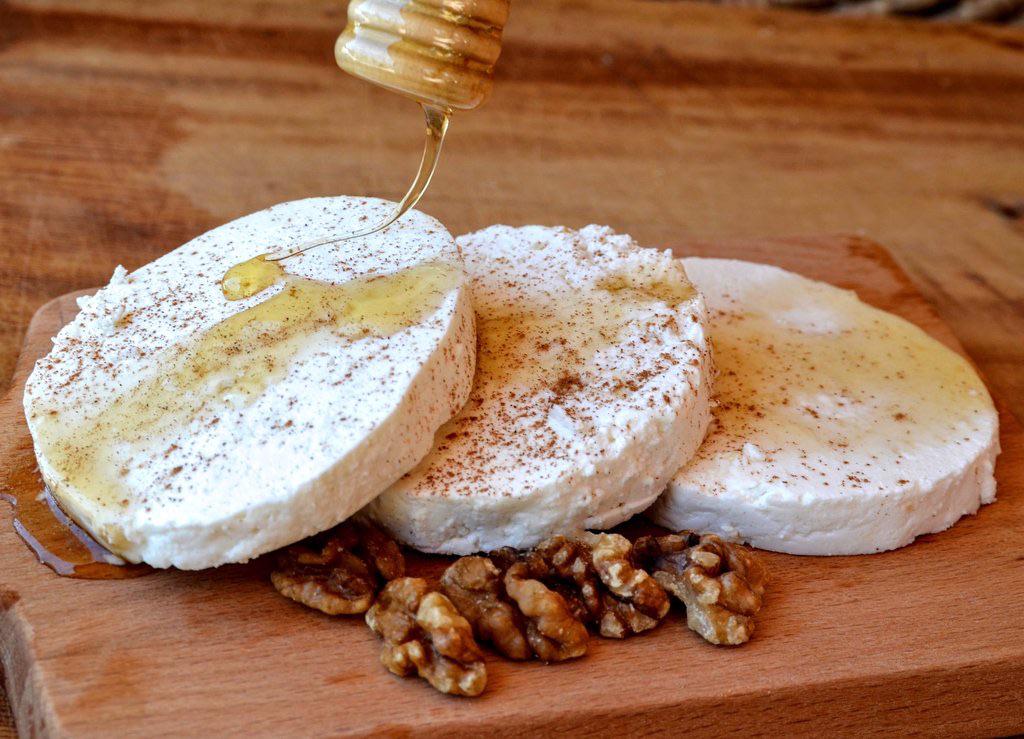
- Country of Origin: Cyprus
- Milk Type: Sheep, Goat
- Taste: Mild, slightly sweet
- Texture: Soft, crumbly
- Food Pairing: Honey, fruit
- Wine Pairing: Sweet dessert wines
- Read in-depth guide
Anari cheese is a traditional Cypriot delicacy that, despite being less known than its counterpart Halloumi, holds its own when it comes to flavor and versatility. This fresh mild whey cheese is typically produced from the by-whey of Halloumi and can be made from cow’s, goat’s, or sheep’s milk.
Anari is available in two main varieties: fresh and dry. The fresh version of Anari is white, soft, and boasts a mild sweet creamy taste. Its texture is creamy, flaky, and brittle, making it an excellent choice for a variety of culinary applications. Unsalted fresh Anari is often used in desserts or consumed as is, offering a delightful contrast to more robust flavors.
On the other hand, dried Anari takes on a harder texture and a more intense flavor profile. It’s usually salted and can be grated over pasta or used in cooking, much like Parmesan.
Anari cheese is versatile and can be used in a range of dishes, from savory to sweet, showcasing the culinary diversity of Cypriot cuisine. It’s definitely a hidden gem in the world of cheeses, reflecting the rich cultural heritage of Cyprus.
3. Feta

- Country of Origin: Greece
- Milk Type: Sheep, Goat
- Taste: Tangy, salty
- Texture: Crumbly, grainy
- Food Pairing: Olives, tomatoes, cucumber
- Wine Pairing: Dry white wines, rosé
- Read in-depth guide
Feta cheese is a beloved culinary staple in Cyprus, widely recognized for its unique taste and versatile applications. Produced traditionally from sheep’s milk or a blend of sheep’s and goat’s milk, Feta cheese boasts a salty flavor and a fresh, crumbly texture.
The popularity of Feta cheese in Cyprus can be attributed to several factors. Firstly, its roots trace back thousands of years to ancient Greece, making it an integral part of the region’s cultural and gastronomic heritage. Furthermore, the production process of Feta cheese adheres to traditional methods, ensuring a high-quality and authentic taste that resonates with locals and tourists alike.
Feta cheese is also incredibly versatile, fitting seamlessly into a myriad of dishes. Whether it’s used in salads, pies, or served as a standalone dish with olives and olive oil, Feta cheese adds a distinctive Mediterranean touch to meals.
Additionally, Feta cheese has gained protection under EU legislation, which asserts that only cheese produced in specific regions of Greece and Cyprus can bear the name ‘Feta’. This legal recognition underscores the importance of Feta cheese to the regions and contributes to its popularity.
4. Graviera
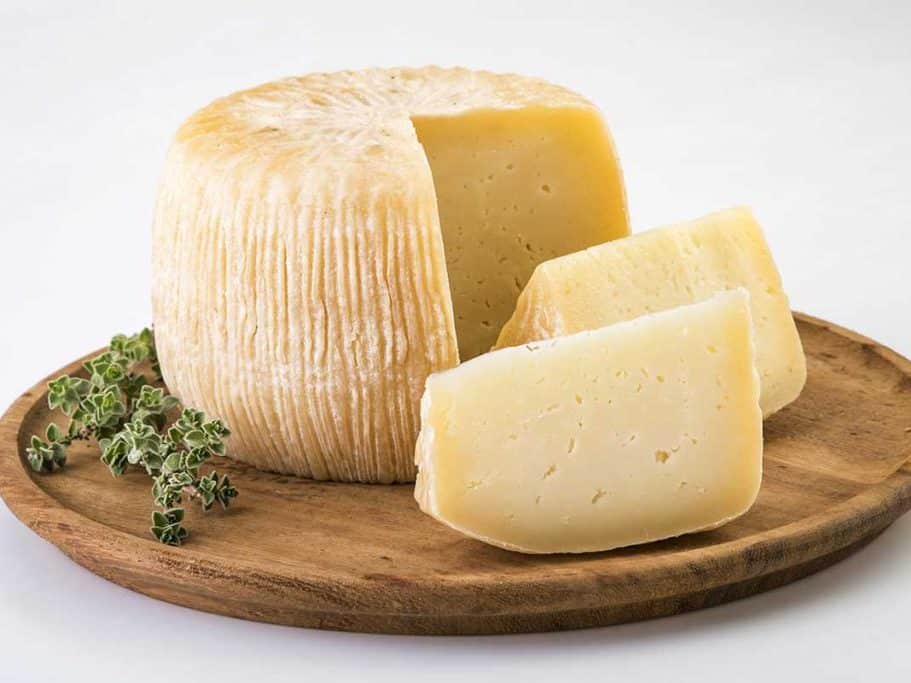
- Country of Origin: Greece
- Milk Type: Sheep, Cow
- Taste: Nutty, slightly sweet
- Texture: Hard
- Food Pairing: Meats, pasta
- Wine Pairing: Red wines
- Read in-depth guide
Graviera is a traditional Greek cheese that also enjoys significant popularity in Cyprus. This hard table cheese, often compared to Gruyère, is lauded for its semi-sweet, slightly salty, and piquant flavor, firm texture, and small eyes distributed throughout its light-yellow body.
In Greece, Graviera is second only to Feta in terms of popularity, with many towns, villages, and islands producing their own distinct varieties. Despite the dominance of Halloumi as the most popular variety of Cypriot cheese, Graviera has managed to carve out a substantial presence in Cyprus.
The popularity of Graviera in Cyprus can be attributed to several factors. Its rich taste and unique texture make it a preferred choice for various dishes. Furthermore, Graviera’s versatility as a hard table cheese allows it to be enjoyed both as an ingredient in cooking and on its own.
Another factor contributing to Graviera’s popularity in Cyprus is its cultural significance. As a traditional Greek cheese, Graviera is an integral part of the region’s culinary heritage, appreciated by locals and the Greek diaspora alike.
5. Kasseri
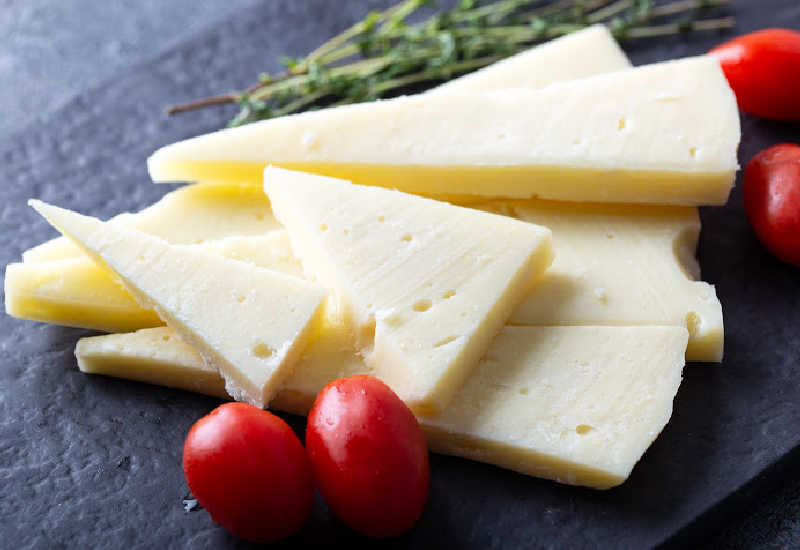
- Country of Origin: Greece
- Milk Type: Sheep, Goat
- Taste: Mild, slightly tangy
- Texture: Semi-hard
- Food Pairing: Bread, fruits
- Wine Pairing: Riesling, Pinot gris
- Read in-depth guide
Kasseri is a semi-hard cheese with origins in Greece that has also gained popularity in Cyprus. It is traditionally made from ewe’s milk or a blend of ewe’s and goat’s milk, with the latter not exceeding 20%.
Kasseri’s appeal in Cyprus can be attributed to its unique flavor and stringy texture, which make it a distinctive addition to various dishes. The cheese has a pale yellow color and is often melted, adding a special touch to traditional recipes.
Moreover, Kasseri’s production process conforms to traditional methods, lending it an authenticity that is highly appreciated by locals and tourists alike. It is often referred to as a “gift of everlasting value,” underscoring its cultural significance.
6. Myzithra

- Country of Origin: Greece
- Milk Type: Sheep, Goat
- Taste: Mild to sharp (depending on aging)
- Texture: Soft to hard (depending on aging)
- Food Pairing: Pasta, honey
- Wine Pairing: Sweet dessert wines
- Read in-depth guide
Myzithra, also known as Mizithra or Mizythra, is a traditional Greek whey cheese that enjoys significant popularity in Cyprus. Made from the whey of ewe’s, goat’s milk, or a blend of both, Myzithra has been part of the Mediterranean culinary tradition for thousands of years.
The popularity of Myzithra in Cyprus can be attributed to its unique flavor and texture. It comes in three main varieties: fresh, sour, and sweet. The fresh version is soft and creamy, while the dry or aged version, often referred to as Xynomizithra, is harder and possesses a stronger, more piquant flavor.
Moreover, Myzithra’s production process, which adheres to traditional methods, lends it an authenticity that resonates with locals and tourists alike. Its cultural significance, coupled with its distinctive taste, makes Myzithra a cherished part of Cypriot cuisine.
7. Saganaki
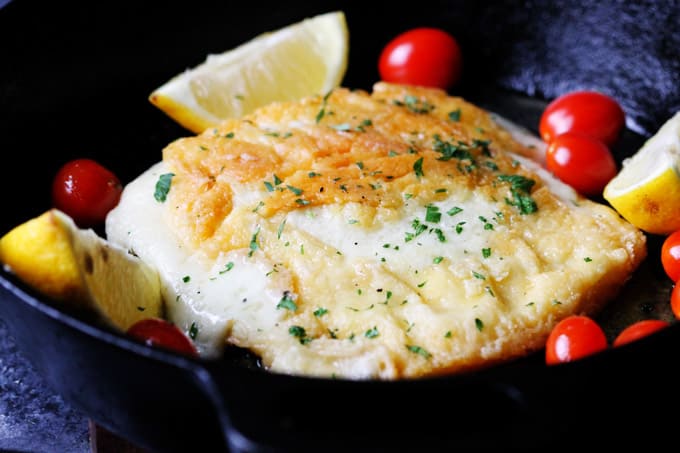
- Country of Origin: Greece
- Milk Type: Varies (commonly Kefalograviera, Kasseri, or Halloumi)
- Taste: Salty, tangy
- Texture: Soft when heated
- Food Pairing: Lemon, bread
- Wine Pairing: Ouzo, Tsipouro
- Read in-depth guide
Saganaki is a popular Greek cheese dish that has also found its way into the hearts of Cypriots. The term “Saganaki” refers not to a type of cheese, but to the method in which the cheese is prepared – pan-seared or fried. The name derives from the small, two-handled pan in which it is cooked.
Saganaki is usually made with semi-hard Greek cheeses like graviera, kefalograviera, kasseri, and even halloumi, the national cheese of Cyprus. The cheese is typically coated in flour and then pan-fried until it forms a deliciously crispy crust on the outside while remaining soft and melty on the inside.
The popularity of Saganaki in Cyprus can be attributed to a few factors. First, the dish’s unique blend of textures and flavors – crispy on the outside, gooey on the inside, and perfectly salty – makes it an irresistible appetizer. Second, the versatility of the dish allows for the use of different types of cheese, including halloumi, which is a staple in Cypriot cuisine.
Moreover, Saganaki’s authenticity and traditional preparation methods align with the Cypriot appreciation for genuine, home-grown culinary traditions. This cultural resonance, coupled with the dish’s delectable taste, makes Saganaki a popular choice in Cyprus.
8. Manouri DOP
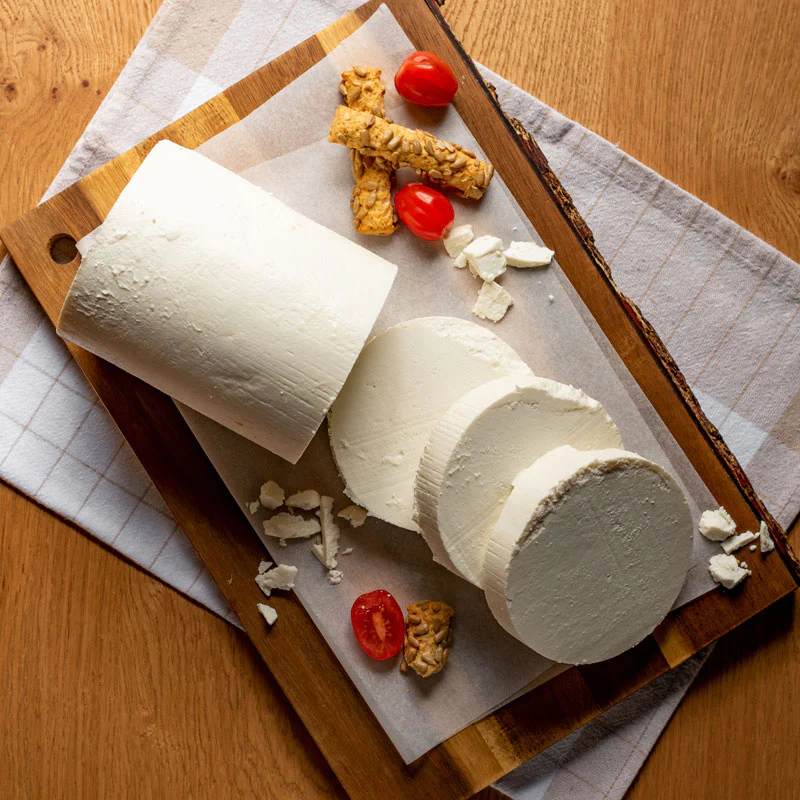
- Country of Origin: Greece
- Milk Type: Sheep, Goat
- Taste: Mild, slightly citrusy
- Texture: Semi-soft, creamy
- Food Pairing: Honey, fruits
- Wine Pairing: Dessert wines, sparkling wines
Manouri DOP is a traditional Greek cheese that has gained popularity in Cyprus. It’s an ancient cheese made from the whey of feta, combined with sheep’s milk cream. This cheese, which hails primarily from the regions of Central and Western Macedonia and Thessalia, offers a creamy texture and a clean, bright, lemony flavor profile.
In Cyprus, the popularity of Manouri DOP arises from its unique taste and versatility. It can be used in a variety of dishes, adding a fresh, tangy, and creamy element that enhances the overall flavor. The cheese is similar to feta but presents a smoother and creamier mouthfeel.
Moreover, the production process of Manouri DOP adheres to traditional methods, which aligns with the Cypriot appreciation for authentic culinary traditions. This cultural resonance, combined with its distinctive taste, makes Manouri DOP a favored cheese in Cyprus.
9. Kefalotyri

- Country of Origin: Greece, Cyprus
- Milk Type: Sheep, Goat
- Taste: Sharp, salty
- Texture: Hard
- Food Pairing: Grilled meats, pasta
- Wine Pairing: Red wines, Retsina
- Read in-depth guide
Kefalotyri is a traditional Greek Cypriot cheese that holds significant popularity in Cyprus. Known for its hard, salty characteristics, Kefalotyri is typically made from sheep’s milk or goat’s milk, or a combination of both.
The popularity of Kefalotyri in Cyprus can be attributed to its unique flavor and versatile culinary applications. It has a firm and flaky texture with irregular eyes and a strong, rich taste, making it an excellent cheese for grating onto pasta dishes. Its robust flavor also stands up well in a variety of other Cypriot and Greek dishes.
Its history, dating back to the Byzantine era, lends it an authenticity that resonates with locals and tourists alike. This cultural significance, coupled with its distinctive taste, makes Kefalotyri a cherished part of Cypriot cuisine.
10. Kefalograviera
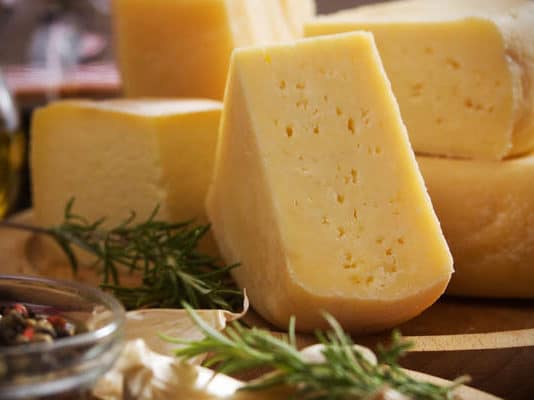
- Country of Origin: Greece
- Milk Type: Sheep, Goat
- Taste: Nutty, slightly sweet
- Texture: Hard
- Food Pairing: Bread, olives
- Wine Pairing: White wines, rosé wines
Kefalograviera is a traditional Greek cheese that has gained significant popularity in Cyprus. This cheese is a delightful cross between Kefalotyri and Graviera, offering an intense, piquant flavor similar to traditional Kefalotyri. It’s made exclusively from pasteurized sheep and goat milk and is known for its firm texture.
The popularity of Kefalograviera in Cyprus can be attributed to its unique taste and versatile nature. It’s a hard table cheese that can be used in a variety of dishes. The cheese’s robust flavor stands out in salads, pasta, and is particularly enjoyed when fried or grilled.
Kefalograviera is becoming one of the most widespread cheeses in Greece, with an annual production of around 3,000 tons. This popularity extends to Cyprus, where locals and tourists alike savor its rich flavor.
Final Thoughts
And there you have it, our journey through the top 10 most popular cheeses in Cyprus. Whether it’s the versatility of Halloumi, the robust flavor of Kefalotyri, or the creamy goodness of Anari, each cheese has its unique charm that makes it a beloved part of Cyprus’ culinary landscape.
These cheeses not only offer a delightful gastronomic experience but also provide a window into the rich cultural heritage and traditional practices of this beautiful Mediterranean island.
They stand as a testament to Cyprus’ commitment to authenticity, quality, and tradition. So, the next time you’re looking to explore new flavors or add a touch of the exotic to your meals, consider trying one of these Cypriot cheeses. You’ll be savoring a piece of Cyprus’ traditions and culinary mastery, one delicious bite at a time.
Also read:





